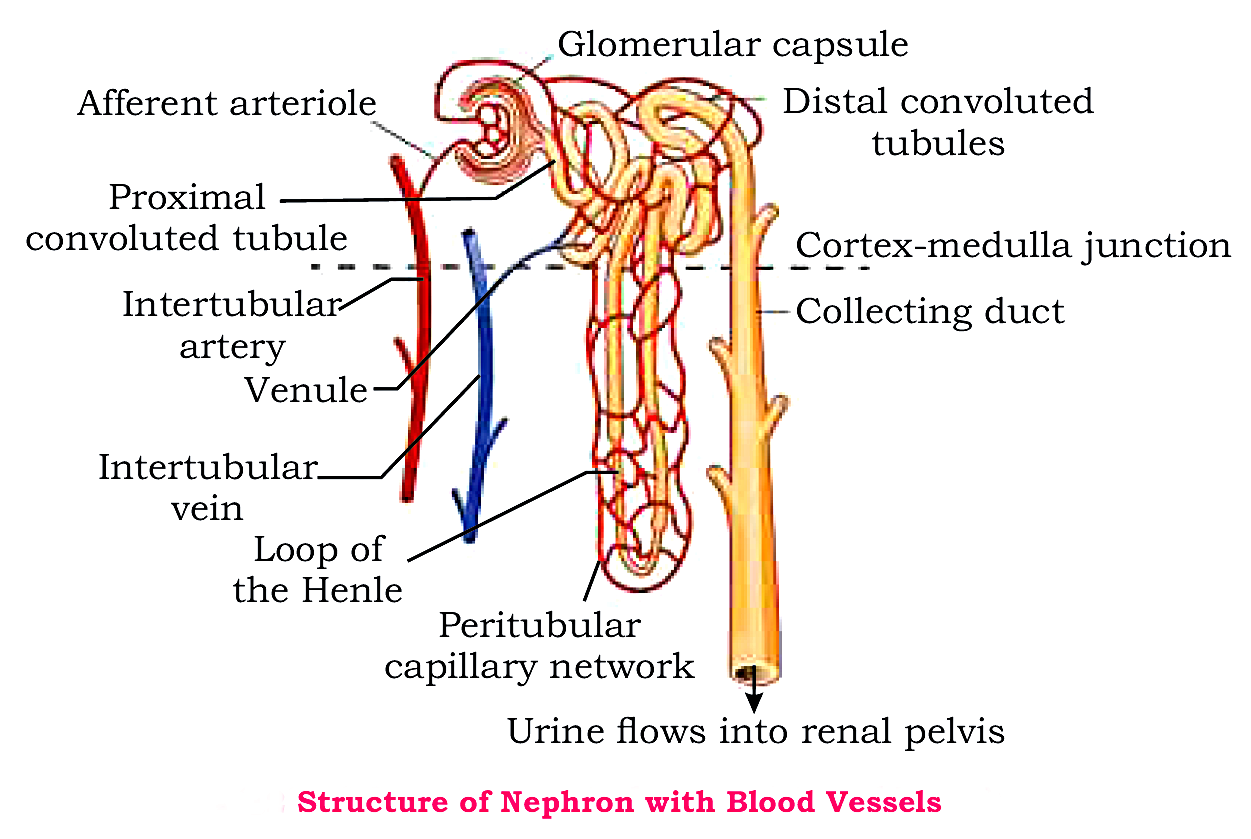Biology For Class X - Chapter No. 2 - Homeostasis - Short Question Answers
GO TO INDEX
CHAPTER 2: HOMEOSTASIS
B. Short Questions Answers
i) Why homeostasis is required? Ans: Homeo means same and stasis means state. So Homeostasis is the regulatory mechanism which maintained the internal environment of an organism within suitable limits. It maintains optimal conditions for enzyme action throughout the body, as well as all cell functions. Enzymes are proteins that catalyze vital chemical reactions inside the body and they work under only proper condition. Homeostasis is responsible for the maintenance of constant internal environment for the working of enzymes despite changes in internal and external conditions.
ii) Why plants remove liquid water instead of water vapours?
Ans: Removal of liquid water instead of water vapours is called guttation. Guttation is the expelling of excess water or nutrients through tiny openings on leaves and stems. This biological process enables plants to restore balance to their nutrient and water content. It only occurs at night when water pressure is high in leaves and low temperature environment is present.
iii) How plant survive in Saltish water?
Ans: Some plants grow in sea marshes or in saltish water. In salty condition water moves outside the cell which is not suitable for plants. To survive in saltish water and to move water from outside to inside the plant develop the following characters.
- They develop salt glands where they store salts by taking it through active transport.
- Plants oppose salt to move outside from vacuole.
- Some salt is accumulated at surface of leaf which attracts water from air.
iv) Why skin is considered as excretory organ?
Ans: Skin is considered as an excretory organ because it excretes water, salt, and urea from the body through sweat. It is the largest organ of the body, which basically functions as a protective organ but it also works and acts as an excretory organ. It is estimated that 3 to 4 million eccrine sweat glands which together roughly weigh the same as one kidney (i.e., 100 g) are distributed over almost the entire human body surface that helps in excretion of water, salt and urea.
v) What type of structures are present in dermis to perform different functions?
Ans: Dermis is the layer present between epidermis and hypodermis, it contains many different structures. They are as follows:
- Dermis has nerves ending receptors to detect temperature change, pain, pressure etc.
- It also contains sweat glands which secrete sweat on the surface to maintain temperature and also secrete urea, water and salt.
- A network of arterioles are also present in the form of network, which are involved in temperature regulation.
- The dermis also contain hair follicle and sebaceous glands which secrete oily sebum.
vi) Draw a neat and labelled diagram of nephron.
Ans: NEPHRONS
vii) What is kidney stone?
Ans: A kidney stone is a solid mass that forms from the crystals of calcium oxalate or Calcium Carbonate. Sometimes uric acid and cysteine are also present in it. These molecules separate from urine, precipitate in kidney and deposit in the form of stone. Sometimes these stones are not hard therefore they break into sand like crystals which can pass out of the body with urine without pain. The large size stone however damages the kidney tissues, they may stuck anywhere in urinary tract and cause renal failure with pain.
viii) How human skin maintains temperature in cold conditions?
Ans: The skin is the organ which help in regulating body temperature. The receptors in skin send nerve impulse to brain in case of increase or decrease in temperature. In cold condition when the body temperature starts decreasing the skin maintains the temperature by following actions:
- Erection of hairs:
The muscles contract pulling the hairs upright and trapping a layer of insulating air next to skin. - Vasoconstraction:
Narrowing of blood arterioles of dermis occur which reduces the blood flow in capillaries of skin so less heat is lost. - Decrease in sweat production:
The sweat gland stops to produce and secrete sweat, in order to prevent energy loss. - Increase in metabolic rate:
In cold conditions the rate of metabolism in the organs increases generating more heat which is distributed around the body in the blood stream. It prevents loss through the adipose tissue in hypodermis which work as an insulation layer.
ix) When dialysis is required?
Ans: The patients of kidney failure requires dialysis when the donor is not available for kidney transplant . A dialysis machine performs the function of a kidney. It helps to clean the patient's blood from metabolic waste products and toxics. For effective treatment the patient needs to undergo dialysis 2 - 3 times a week. Each session lasts about 3-5 hours depending on the patient's body size and medical condition.
x) Why filtration at Para tabular capillaries called ultra filtration?
Ans: Filtration at Para tabular capillaries is referred to as Ultra filtration because most of the blood plasma is forced out of the glomerulus blood capillaries into Bowman's capsule without any selection. This is a Process of non-selective filtration.







0 Comments